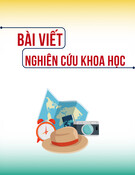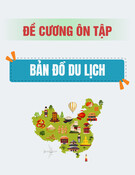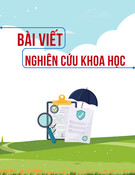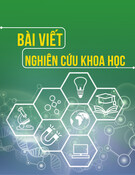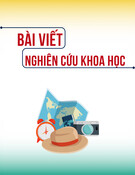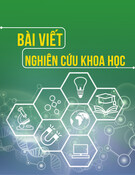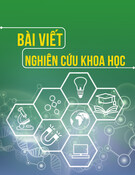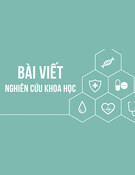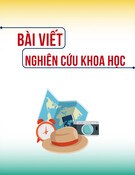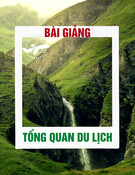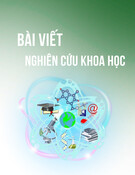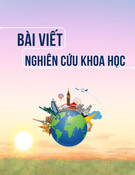
48 Journal of Development and Integration, No. 79 (2024)
No. 79 (2024) 48-54 I jdi.uef.edu.vn
* Corresponding author. Email: canhtq@uef.edu.vn
https://doi.org/10.61602/jdi.2024.79.06
Received: 08-Aug-24; Revised: 08-Oct-24; Accepted: 14-Oct-24; Online: 07-Nov-24
ISSN (print): 1859-428X, ISSN (online): 2815-6234
K E Y W O R D S A B S T R A C T
Government Role
in Tourism Marketing,
Marketing Strategies,
Resource Allocation,
Tourism Policies,
Vietnam Tourism
Promotion.
This study examines the Vietnamese government’s role in marketing the country as a
global tourist destination, focusing on marketing strategies, resource allocation, policy
implementation, industry collaboration, and responsible tourism promotion. A generalized
structured component analysis was used to analyze data from a convenience sample of
240 international tourists and key stakeholders in Ho Chi Minh City. The results show
that government strategies, resource distribution, policies, collaboration, and responsible
tourism efforts significantly influence the perceptions of Vietnam as a tourist destination.
The study recommends enhancing collaboration, adopting integrated marketing strategies,
efficiently allocating resources, refining policies, and promoting responsible tourism.
Despite these limitations, this study provides insights for policymakers and stakeholders
in Vietnam and other countries seeking to enhance their tourism sectors. It contributes to
the literature by analyzing Vietnam’s context and providing a framework for comparative
studies. Recommendations include developing targeted marketing strategies, investing
in infrastructure and campaigns, streamlining procedures, partnering with industrial
stakeholders, and promoting sustainable tourism.
Tran Quang Canh*
Ho Chi Minh City University of Economics and Finance, Vietnam
The role of the Government in promoting
Vietnam as a global tourist destination
1. Problem Statement
The Vietnamese government, specifically the
Ministry of Culture, Sports, and Tourism, plays a crucial
role in marketing the country to international tourists
through strategic marketing, resource allocation, policy
development, industry collaboration, and the promotion
of responsible tourism. Marketing strategies are
integrated with public relations to enhance reputation
and establish trust while ensuring adherence to legal
and ethical standards. Resource allocation encompasses
financial and technical support to foster innovation,
particularly among small and medium-sized enterprises
(SMEs) involved in tourism. Vietnam’s tourism
policies have transitioned from being centrally planned
to market-driven, emphasizing international integration
and domestic resource mobilization for development.
Government-industry collaboration, exemplified by
vaccine diplomacy during the COVID-19 pandemic,
demonstrates a proactive approach to public health and
economic stability. The government promotes foreign
direct investment (FDI) and international economic





